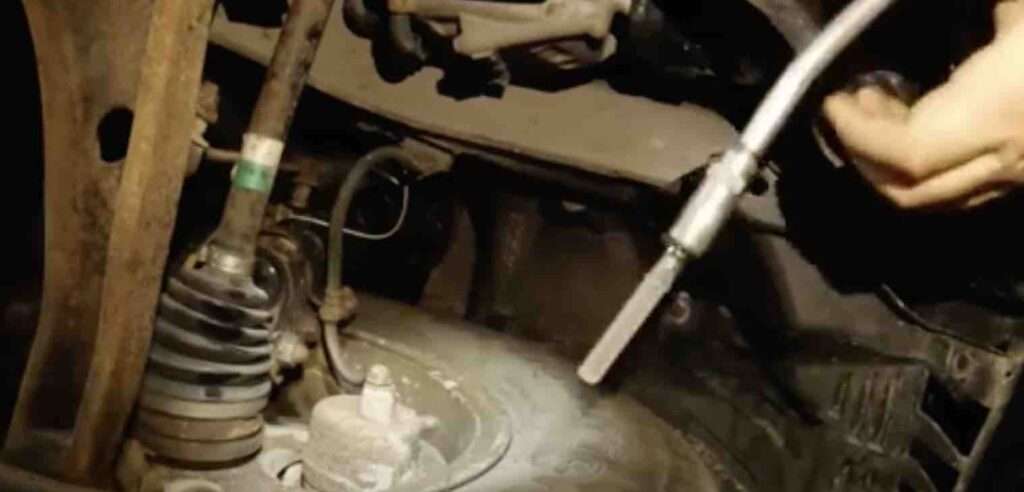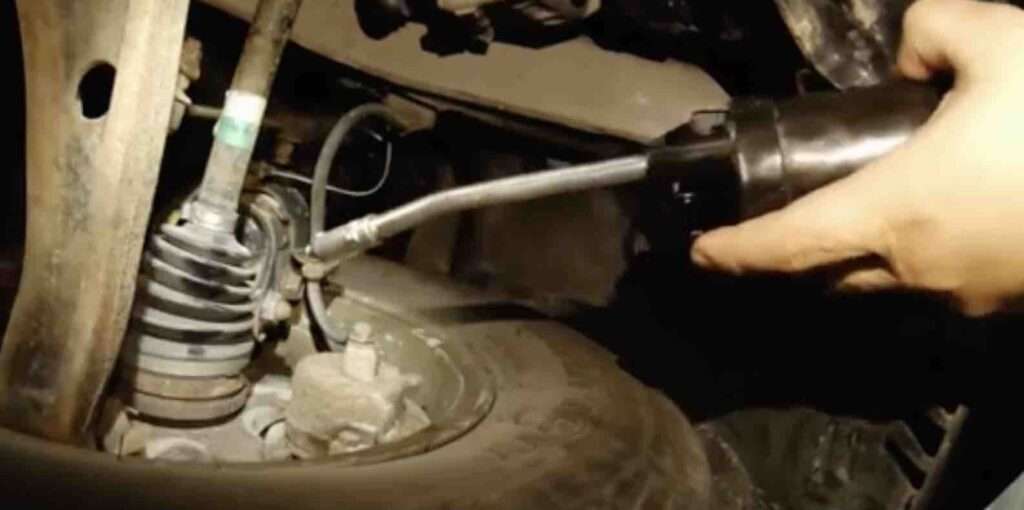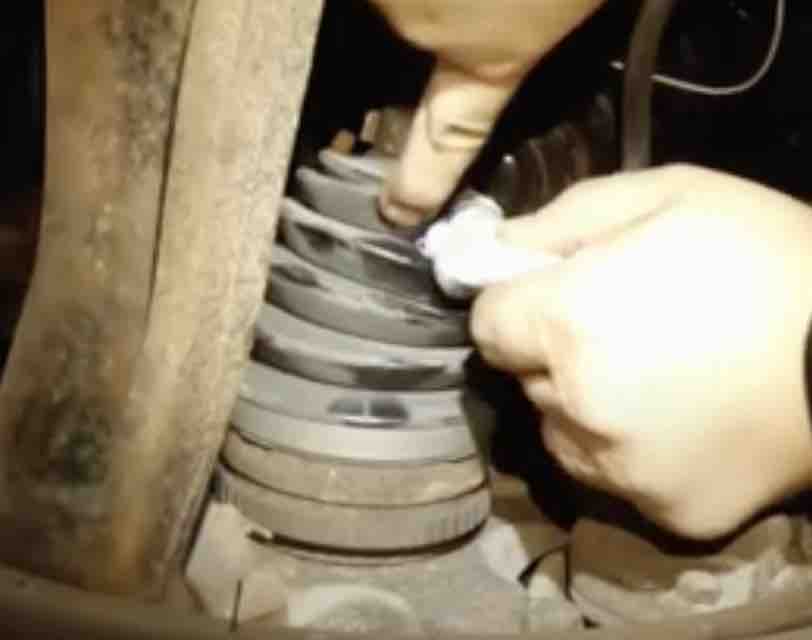Last updated on July 28th, 2023 at 10:12 am
Is it possible to grease the CV joint of your car without removing the boots? And if it is possible what are the steps on how to grease cv joints without removing the boots? In this article, I will discuss all the following questions:
How do you add grease to a CV joint? Can you over-grease a CV joint?
What kills CV joints? Can you use white lithium grease on CV joints? Why do CV joints need special greases? What is lithium complex grease for CV joints? Is white lithium grease better than silicone grease? And lastly, where should you not use lithium grease?
Overview of the CV joint.
The CV joint of your vehicle serves as the crucial hub of interaction between its transmission and drive wheels of your vehicle which is an indispensable link. Each drive wheel boasts its own pair of CV joints: outer CV joints provide sturdy links between wheel and axle while inner joints establish reliable communications between transmission and axle which ensure your speed remains unalterable even in response to unexpected potholes!
A sleek rubber boot is normally what is used for the covering of the CV joints helping to provide additional protection to these critical joints.
Note that CV joints involve metal-on-metal and it will be of help to keep things smooth by regularly greasing them are key in maintaining their groove smoothly and reducing friction and wear.
What are a CV joint and its function of CV Joint?
By definition, a CV joint which is the short form of Constant Velocity joint is what ensures a steady speed for your vehicle. They connect drive wheels to transmissions with two such joints on each axle–an inner joint connecting the transmission to the axle, while another brings together the axle and wheel.
CV joints play an essential role in keeping wheel speeds consistent when encountering uneven terrain or obstacles like potholes, providing bonding between two rotating shafts so they work in concert rather than against one another due to poor lubrication.
How to grease cv joint without removing them
So steps to grease the CV Joints Without Detaching or removing the bolt.
To add grease to a CV joint without taking down its boot, it typically requires using either a grease needle or needle adapter that punctures through and punctures out a hole in its shell.

First and four most you need to purchase a Grease Needle and you buy a grease needle at almost all auto parts stores for relatively affordable prices which is designed to attach directly onto standard grease guns. or you can get this one here
steps on how to grease a cv joint without removing boot

Your safety must always come first, which means jacking up the vehicle sufficiently on two jacks so as to provide enough room underneath for you to go under without any obstruction.
Now are here the steps to grease a cv joint
- Start by unbolting and taking off the tire, leaving only its hub intact.

- Next, you have to Turn the wheel away from the steering system which is outward in order to reveal the CV joint of your car.
- Now, you have to get a grease gun with a pointed or narrow mouthpiece. Pierce a boot CV joint using the grease gun before injecting some grease into the joint.

- Locate and secure any holes caused by the grease gun with super glue after applying the appropriate amount of grease to the CV joint.
- Assemble all remaining vehicle wheel parts, and clean each one carefully using soapy water.

- Repeat Steps 2-6 with any remaining drive wheels.
- Reconnect the tires and lower the jacks.
So basically that is the way how to grease a cv joint without removing the boot.
Now how about Grease-Depleted CV Joints? What Happens If the CV Joints Run Out of Grease?
What happens if the CV joints run out of grease?
Without enough grease in their CV joints, rotating shafts begin grinding against each other while accelerating wears of all kinds and noise levels. You may notice increasing wear on tires and increasing wear on brake pads resulting in wheel dislodging in motion rendering the car inoperable and necessitating either towing services or immediate on-site repair.
However, before CV joints reach this crucial phase, CV joints usually will provide warning signals, such as an audible click noise whenever you turn your steering wheel.

Cover Your Battery Terminals with Dielectric Grease:
Applying dielectric grease is an ideal way to combat corrosion on battery terminals. Dielectric grease won’t conduct electricity and maintain its pliability over an extended period, plus its impressively high melting point ensures even small amounts applied will last through time.
Placement of Dielectric Grease on Battery Terminals: Before covering battery terminals with dielectric grease, ensure their leads are connected. Dielectric grease acts as a vapor barrier between dielectric grease and your terminal leads and corrosion. Petroleum jelly may serve as an acceptable substitute. But most types of grease protect against corrosion as well.
Substituting Silicone Grease for Dielectric Grease: Its Yes, silicone grease makes an excellent alternative for battery terminals due to its extremely high melting point. It remains stable under high temperatures or summer heat without dripping – its temperature range covers from -40OF up to 400OF!
Regular Grease as an Alternative to Dielectric? While conventional grease like Vaseline may work fine as an alternative dielectric material, its low melting point requires frequent applications as a preventative measure.
Dielectric Grease Vs Silicone Grease what’s the difference?
Dielectric and silicone grease vary substantially in several aspects. Formally speaking, their forms differ dramatically with dielectric grease being translucent for sealing electrical conductors while protecting from dirt, sand, dust, debris, etc. Conversely, silicone grease produced from mixing thickeners with silicone oils provides water resistance that’s great for protecting rubber parts against dirt.
Dielectric grease tends to cost more than silicone grease due to its wide array of applications. While both are non-conductive, dielectric remains flexible while silicone eventually hardens.
Silicone grease is significantly thicker than dielectric grease; both varieties boast high melting points.
FAQ
Can you over grease a CV joint?
Yes, over-greasing of CV joints can increase pressure, thereby leading to the boot of the CV joint to rupture and the release of grease into the joint from outside sources; thus allowing contaminants and dirt particles in and thereby further damaging it.
Which grease is best for CV joints?
Molybdenum disulfide (moly) fortified greases tend to be the go-to choice when selecting the best grease for CV joints due to their superior high temperature and extreme pressure resistance, making them essential components in CV joint environments.
What kills CV joints?
What Causes CV Joint Damage? CV joints can become compromised through lack of lubrication from torn boot parts or contamination by dirt and debris or lack of regular maintenance, ultimately leading to wear-and-tear and eventual joint failure.
Can you use white lithium grease on CV joints?
White lithium grease typically isn’t recommended as the ideal lubricant for CV joints due to its ineffective performance under high-pressure environments; moly-fortified grease made specifically to withstand CV joint environments is usually best.
Why do CV joints need special greases?
CV joints require special grease due to their high-pressure and high-temperature operation. Special grease, like moly-fortified grease, is designed to withstand these extreme conditions, ensuring proper lubrication and prolonging CV joint life.
What is lithium complex grease for CV joints?
Lithium complex grease is a high-quality multi-purpose grease known for its high-temperature tolerance and excellent water resistance. While it can be used for various applications, it’s typically not the first choice for CV joints.
Is white lithium grease better than silicone grease?
White lithium grease and silicone grease serve different purposes. Lithium grease is excellent for metal-to-metal applications due to its heavy-duty performance. In contrast, silicone grease is ideal for plastic and rubber components as it doesn’t cause swelling or deformation.
Where should you not use lithium grease?
Avoid using lithium grease on components that come into contact with rubber and certain plastics, as it can cause them to swell or deform. Always refer to the manufacturer’s instructions for specific applications.
To lubricate a CV joint, first hoist your vehicle using a jack, remove its tire, rotate outward, and gain access to its joint with ease, make a hole using the sharp tool in the rubber boot then inject grease through it directly into the joint then seal up the hole using super glue.

Hi dear, my name is Jeffery Ekweghi, and I am a certified mechanic and autobody parts technician. I created this site to share my expertise and experience with car lovers looking to resolve their car-related issues. I am certified in private cars and heavy-duty commercial vehicles. I have worked as a mechanic since 2015 and have experience in vehicle brands like Subaru, Jeep, Toyota, TATA, BMW, Mazda, Honda, Nissan, Kia, TVs, and Others; however, I primarily specialize in Toyota vehicles.












